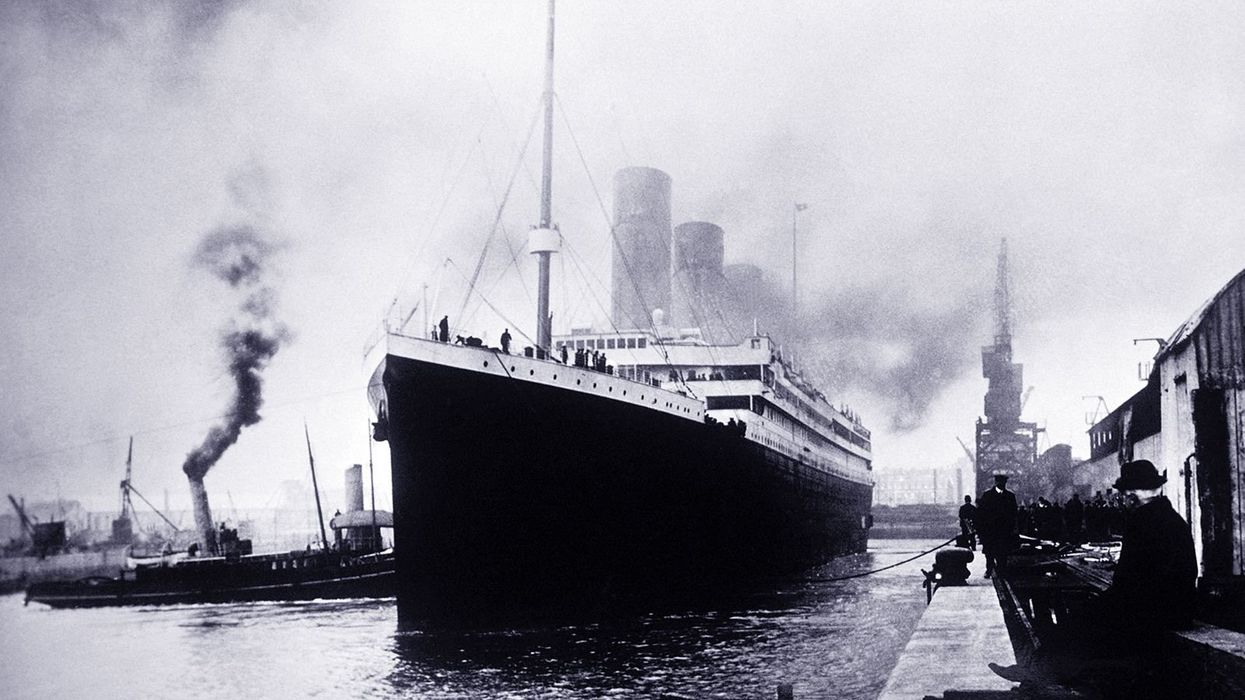(CNN) — After RMS Titanic sank on its maiden voyage across the Atlantic in 1912, governments on both sides of the ocean took a hard look at whether more could have been done to protect the some 2,200 people aboard, including the more than 1,500 who died.
The result was the Convention for the Safety of Life at Sea (SOLAS). Passed in 1914, its framework stands to this day, with many of its rules directly evolving from the Titanic tragedy.
With the implosion of the submersible Titan as it dived down to the wreck of the Titanic this week, killing all five people aboard, experts say there may be a new push for rules governing new high end, big dollar tourism of the kind being practiced by OceanGate Expeditions, the company that ran the Titan.
The unsinkable ship
When the Titanic set sail from Southampton, it was the world’s largest ocean liner, built with state-of-the-art maritime technology that many thought made it unsinkable.
“Not even God himself could sink this ship,” is a quote attributed to an employee of the White Star Line, the Titanic’s owner, as it was launched in 1911, according to the United States National Archives.
The Titanic had compartmentation and automatically closing water-tight doors, which was supposed to ensure any hull breach would be limited and not jeopardize the entire ship.
Such was the belief in the Titanic that safety regulations of the day were not updated to keep pace with the technology.
It is well known that Titanic did not have enough lifeboats. A post-sinking inquiry by the British government, under whose flag Titanic sailed in 1912, found it only had a total lifeboat capacity for 1,178 people covering close to just 50 percent of those on board.
But the 1894 British regulations dictated that the biggest passenger ships need carry only have a lifeboat capacity of 990 people, according to a US Library of Congress (LOC) blog post on Titanic.
British regulators based lifeboat spaces on ship displacement tonnage, not the number of passengers aboard, the post says.
The British government commission investigating the sinking cited the country’s Board of Trade, which regulated shipping, for not keeping regulations up to date, the LOC post says
Meanwhile, a US Senate investigation noted that Washington just accepted the existing British regulations. It said such protocols should be stopped and that ships calling in US ports should adhere to US regulations, the post said.
Clearly, an international standard needed to be established and in 1914 SOLAS was passed.
“The SOLAS Convention in its successive forms is generally regarded as the most important of all international treaties concerning the safety of merchant ships. The first version was adopted in 1914, in response to the Titanic disaster,” the International Maritime Organization (IMO) says on its website.
SOLAS, which has been updated in 1929, 1948, 1960 and 1974, aimed to fix some of the safety and regulatory shortfalls seen in the Titanic disaster.
For instance, it now requires lifeboats or rafts for 125 percent of the passengers and crew aboard.
It also specifies “minimum standards for the construction, equipment and operation of ships, compatible with their safety,” according to the IMO.
Other SOLAS regulations linked back to the Titanic disaster include:
Abandon ship drills – The Titanic captain had canceled one the day of the sinking. Now they are required within 24 hours of leaving port if 25 percent or more of the crew have not drilled on their embarked vessel previously.
Radio watch – Because the nearby vessel SS Californian didn’t hear the Titanic’s distress calls, ships at sea are now required to monitor distress channels 24/7.
International ice patrol – Titanic sank after hitting an iceberg. Since 1914, the patrol has monitored bergs in the North Atlantic and distributed the information to mariners.
Lessons from Titan
Maritime experts and historians have noted the Titan submersible operated outside of the regulations prompted by the Titanic disaster.
Titan’s operator, OceanGate Expeditions, said in a 2019 blog post that the submersible was safe, but that the innovations incorporated in it outpaced the ability of regulators to certify them.
Titan also operated in international waters, and was not regulated by a “flag state,” a country under which it was registered and sailed, said Sal Mercogliano, a professor at Campbell University in North Carolina and maritime historian.
“Flag States (like Britain for Titanic) are responsible for ensuring that ships under their flag comply with its requirements, and a number of certificates are prescribed in the Convention as proof that this has been done,” the IMO says.
The Titan submersible did not need to conform to safety regulations, since it operated in international waters. “It is a gray area that is being exposed to the light of day,” Mercogliano said.
While innovators and explorers may push the limits – or even break the rules – for scientific advancement, experts say there should be a higher safety threshold for paying passengers, like three of the dead aboard Titan, and that a rethink of the how the international rules governing such expeditions may be in order, just as the rules were re-examined after Titanic sank.
“That Titanic event more than 100 years ago changed regulation,” said Per Wimmer, a Danish philanthropist and adventurer.
“It is quite possible that with the Titan imploding like this, and with the partial lack of or maybe a gap in the regulatory space if you do dives in international borders, it’s quite possible that the Titan might actually be the catalyst for more regulation within the submersibles field,” Wimmer told CNN’s Anderson Cooper.
James Cameron, who directed the hit 1997 film “Titanic” and has made 33 dives to the ship’s wreckage as well as to even deeper parts of the ocean in his Deepsea Challenger vessel, told Cooper that anyone boarding a vehicle involved should make sure its has passed government safety certifications.
“Every day we trust our lives to engineering. We step into an elevator. We make an assumption that somebody somewhere has done the math properly and it’s all been certified properly. We should take the same precautions when we get into a submersible,” Cameron said.
The director said he saw links between two disasters separated by 111 years of history.
“I think there’s a great, almost surreal irony here, which is Titanic sank because the captain took it full steam into an ice field at night, on a moonless night with very poor visibility after he had been repeatedly warned,” he said.
“We’re also seeing a parallel here with unheeded warnings about a sub that was not certified.”
The-CNN-Wire
™ & © 2023 Cable News Network, Inc., a Warner Bros. Discovery Company. All rights reserved.

















































